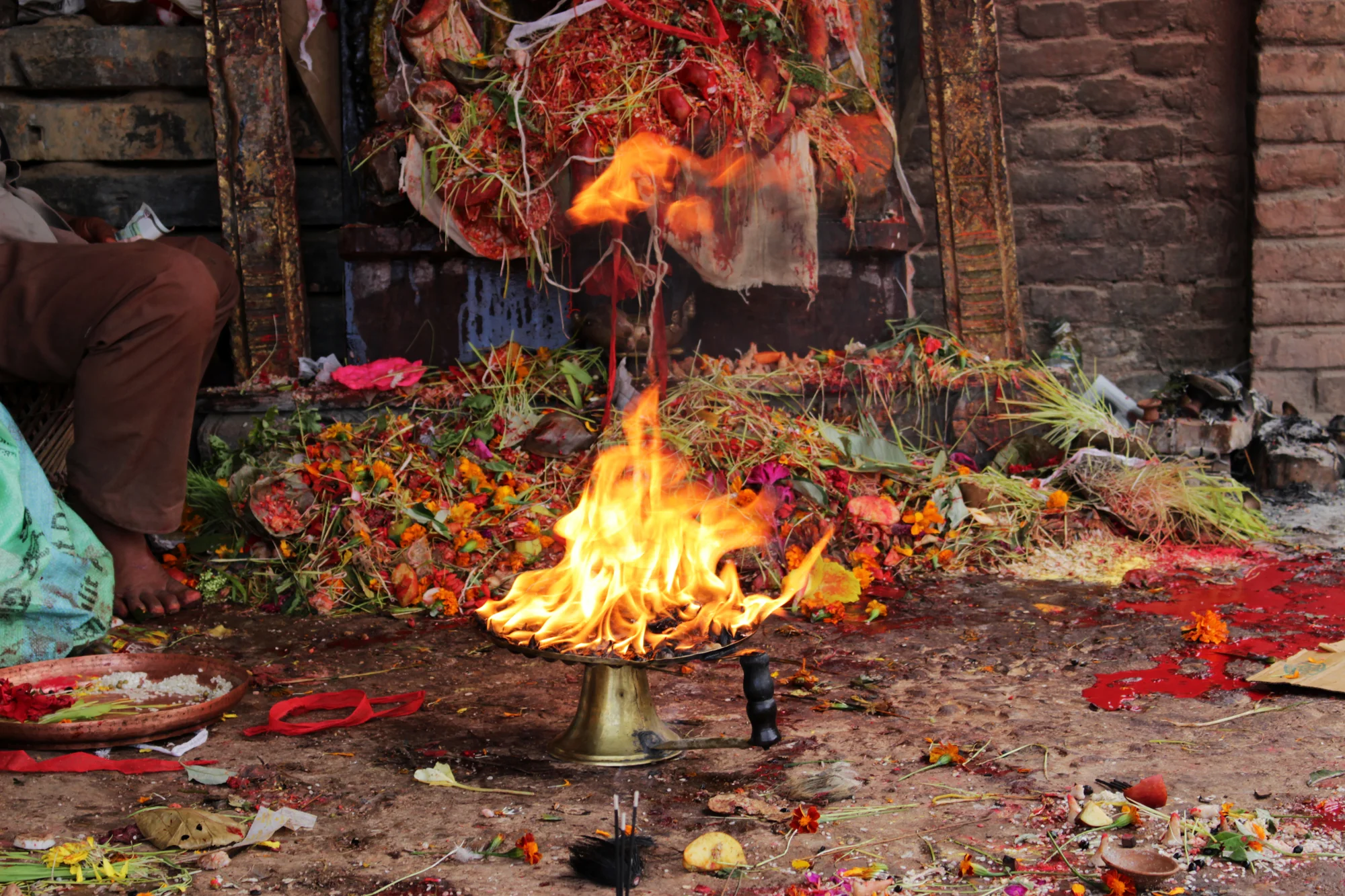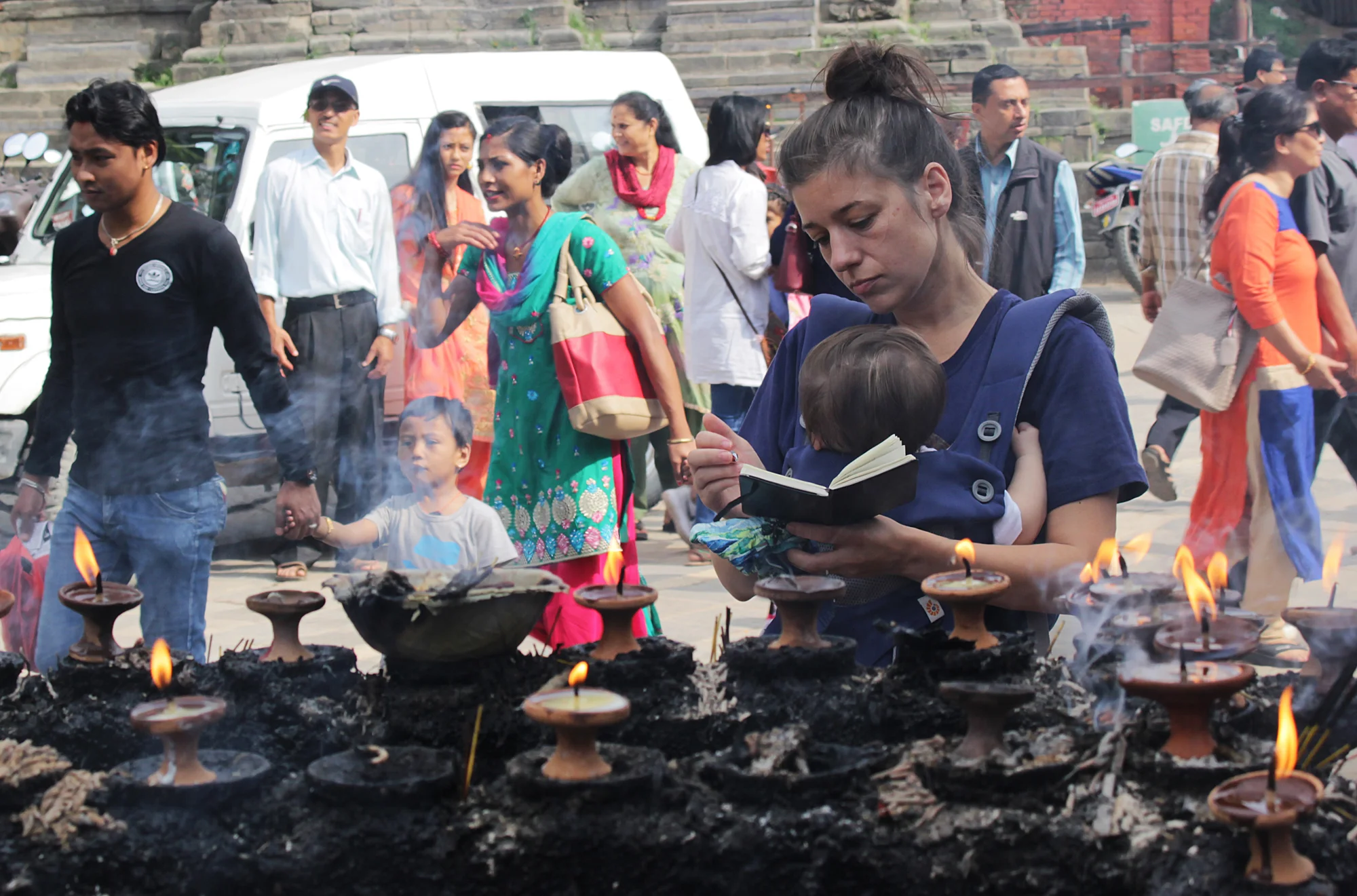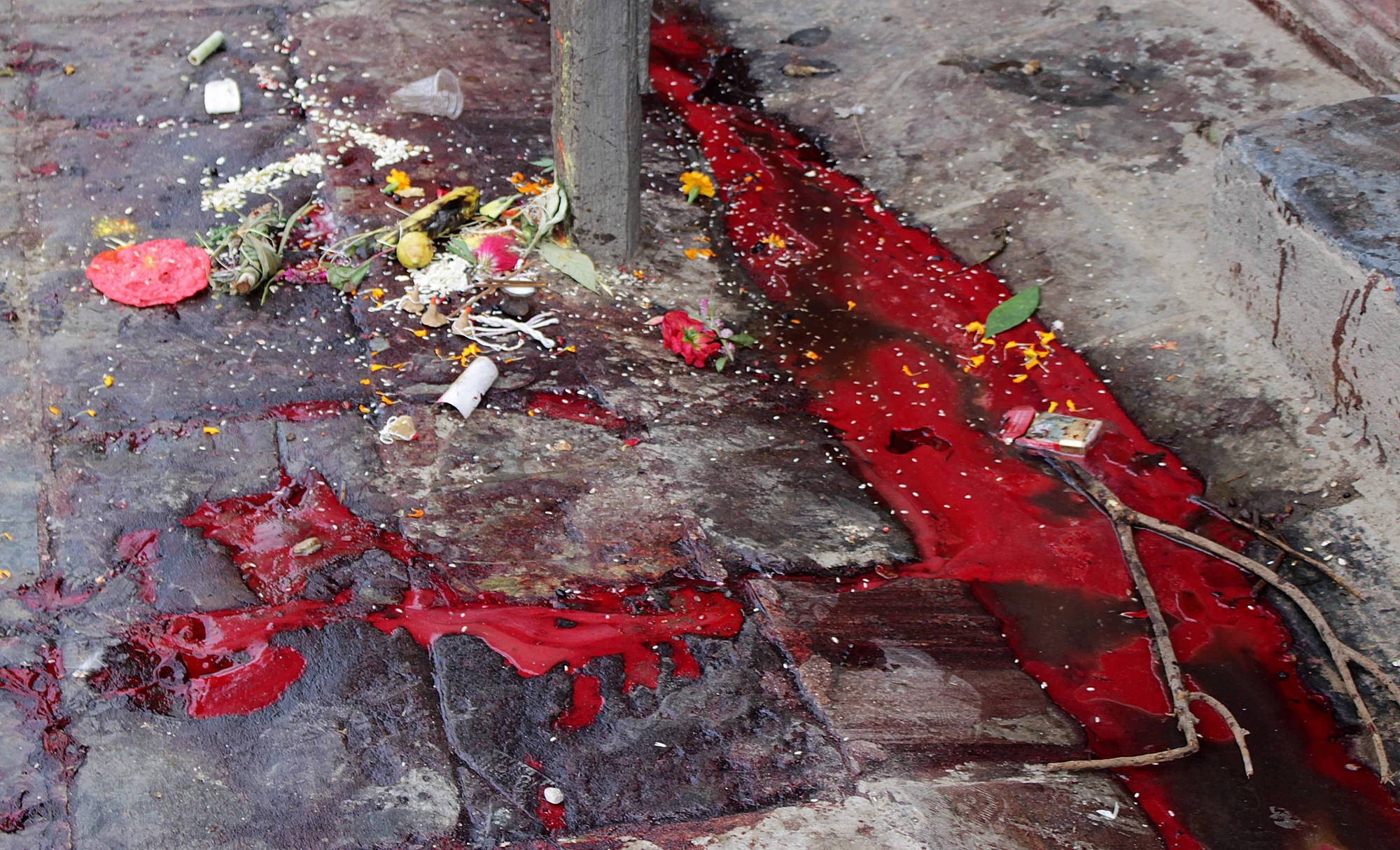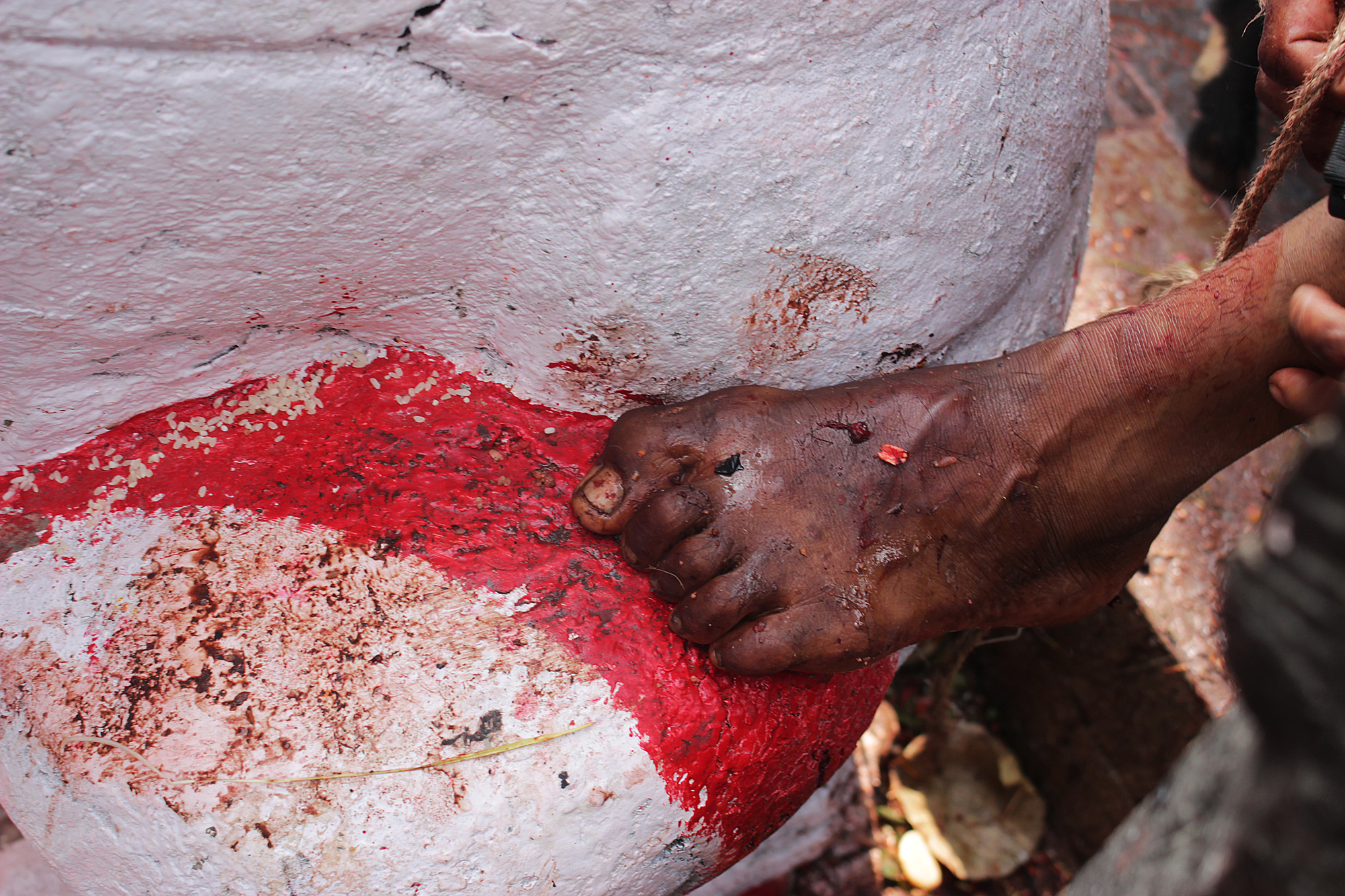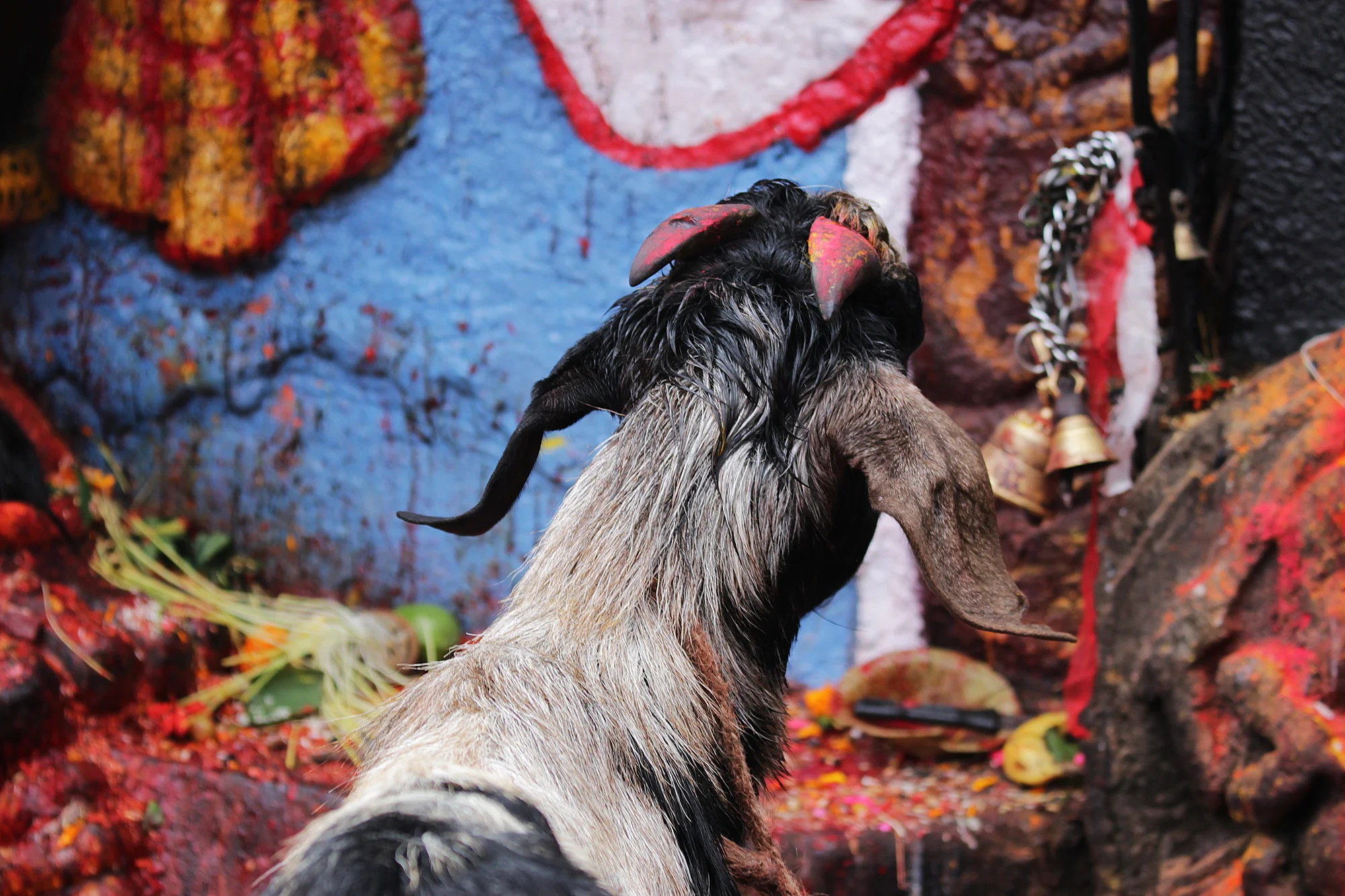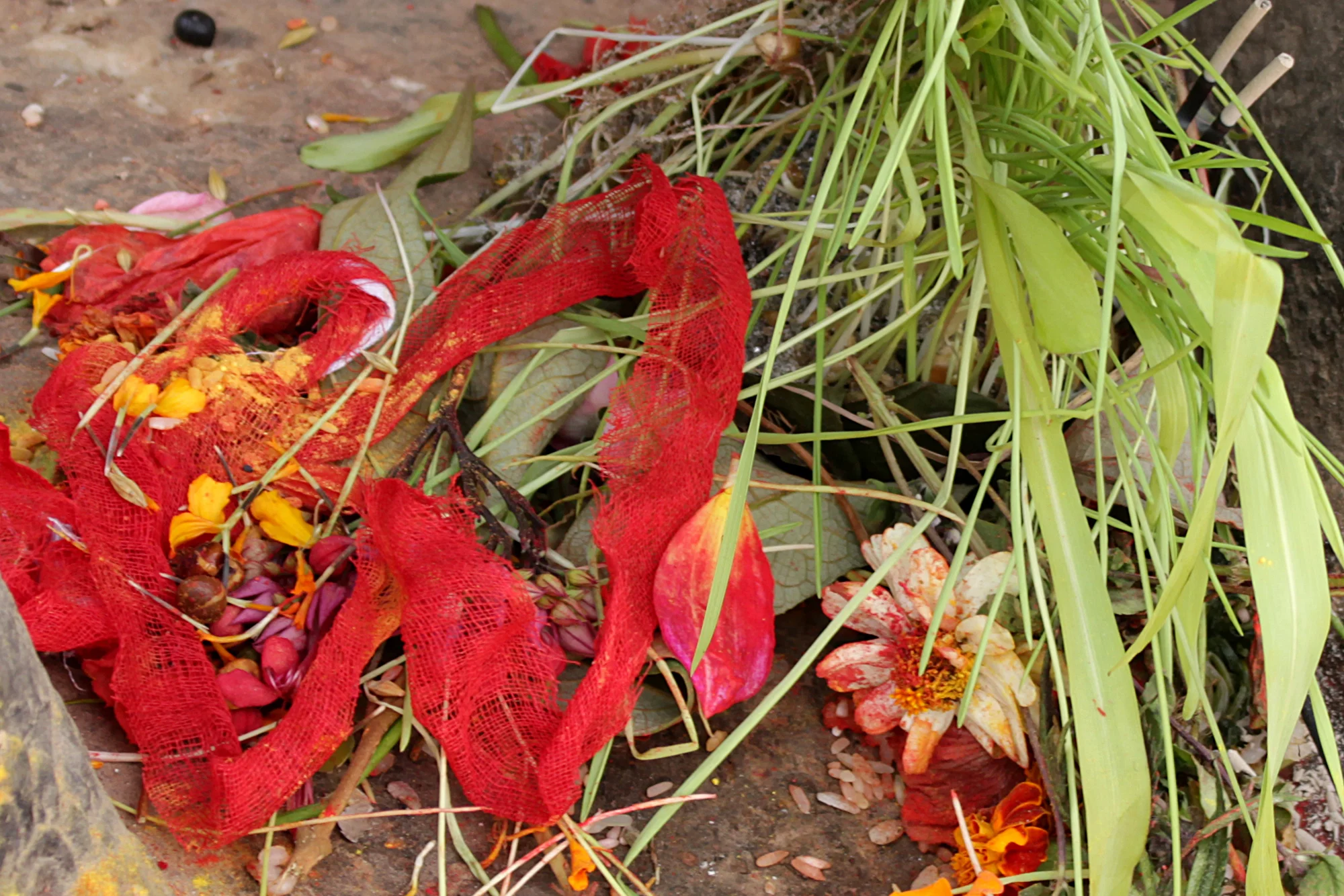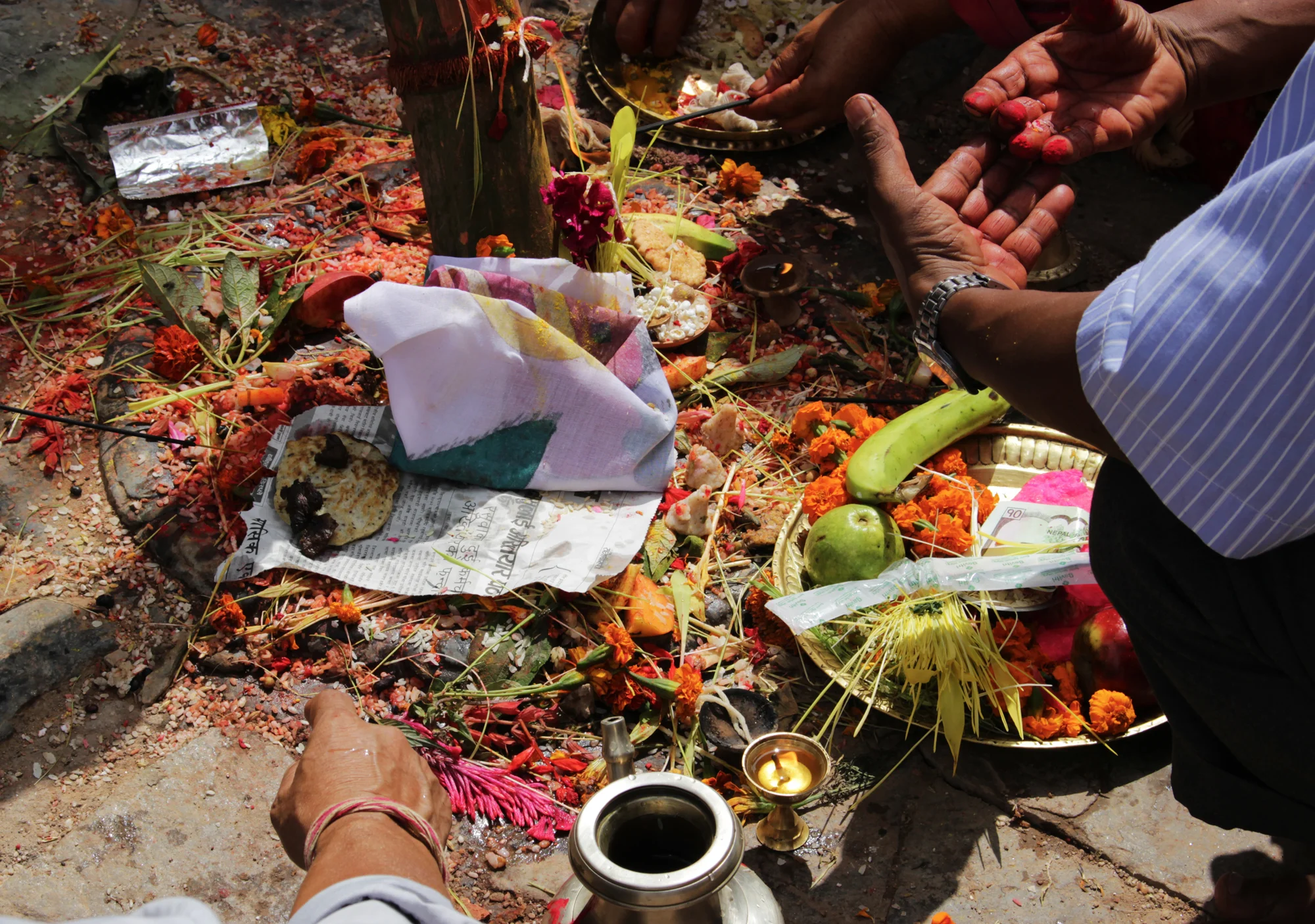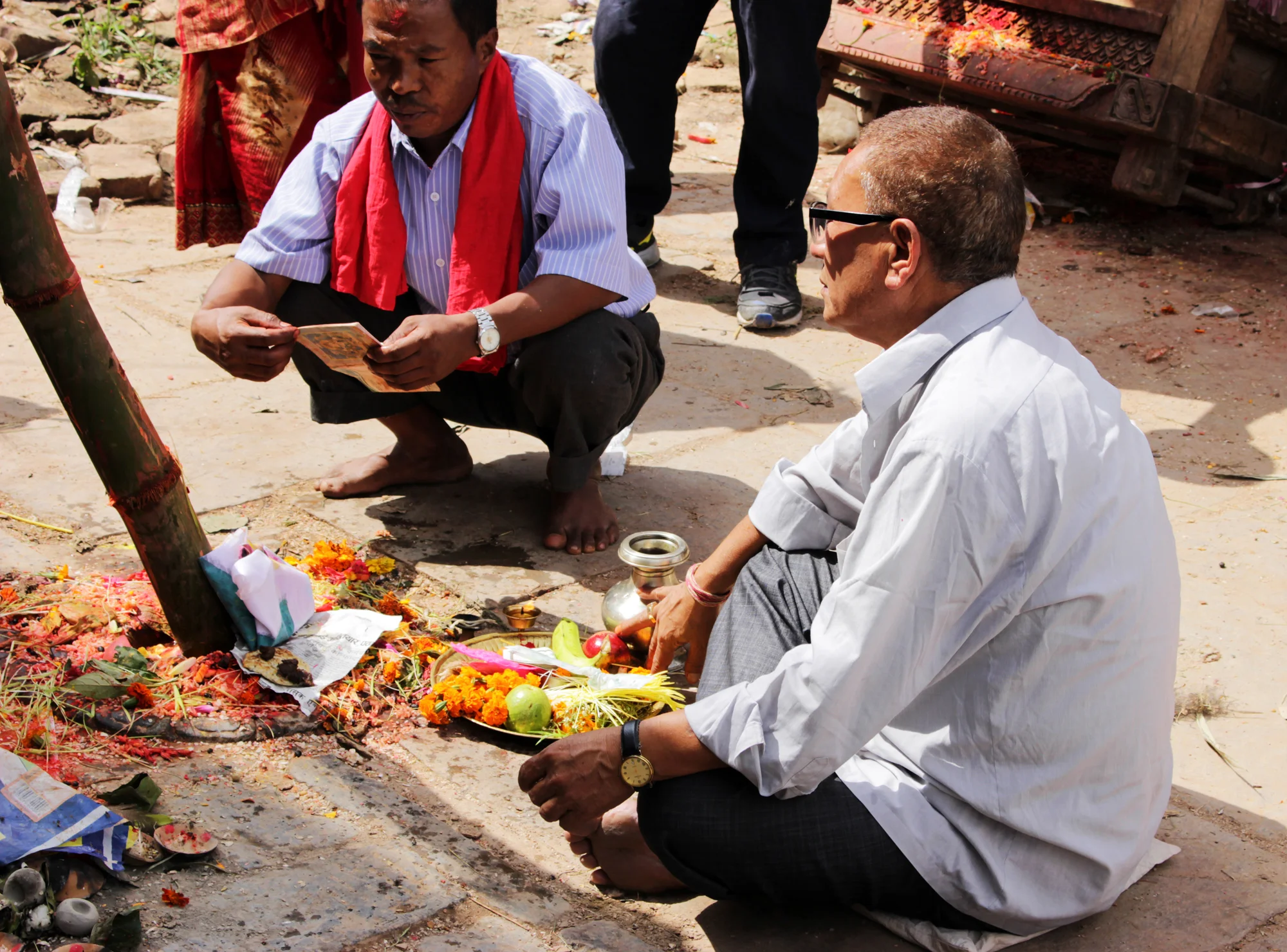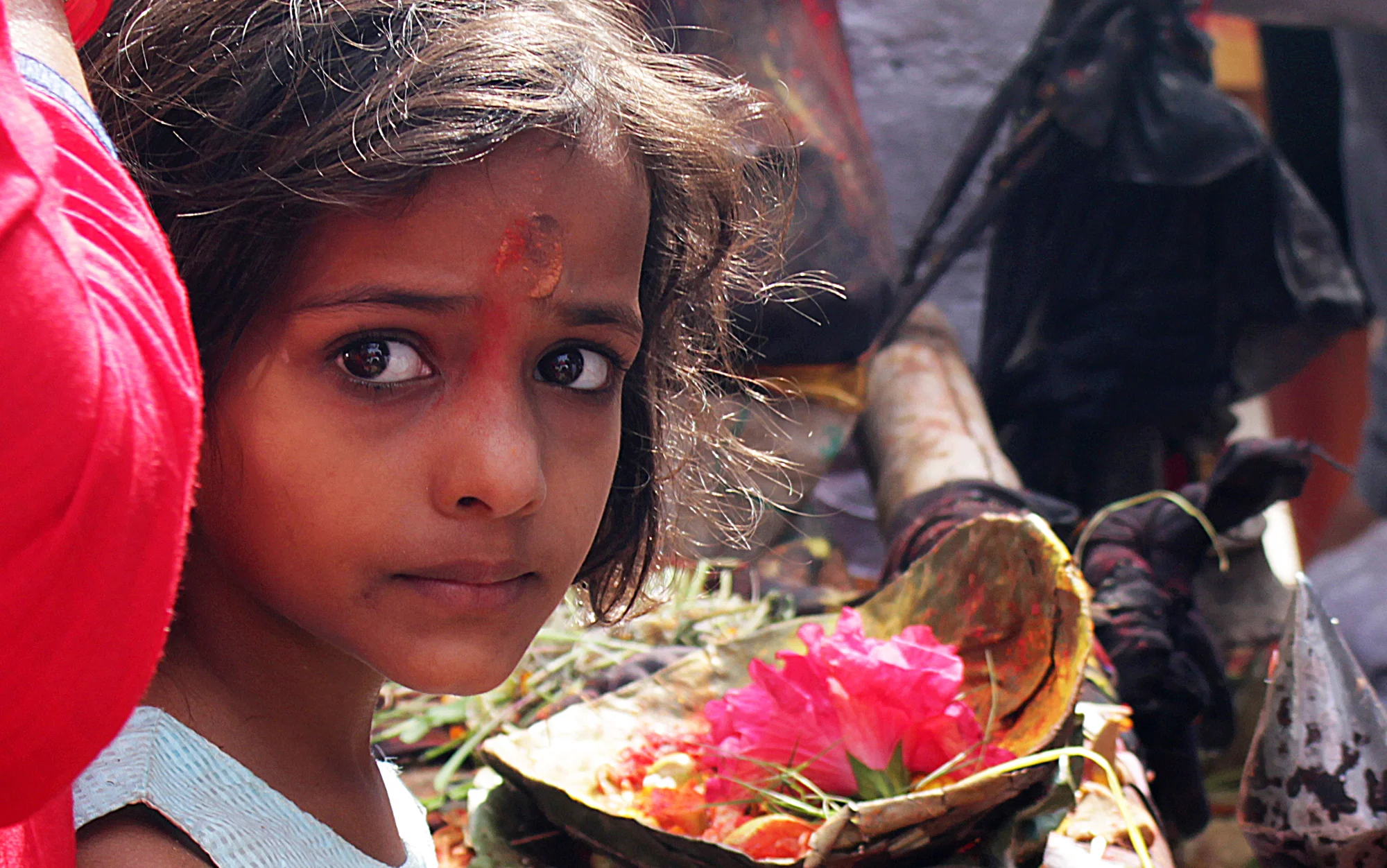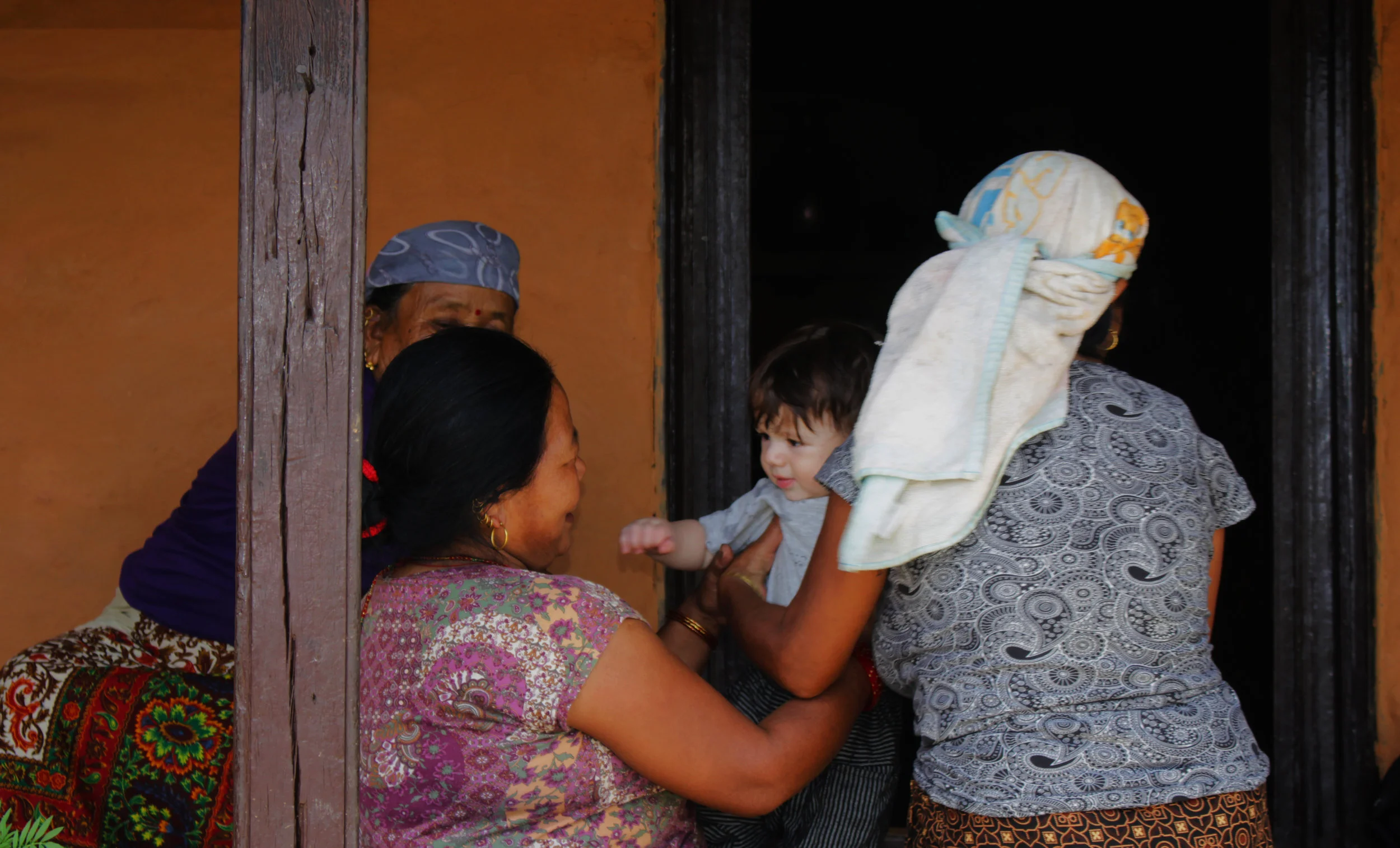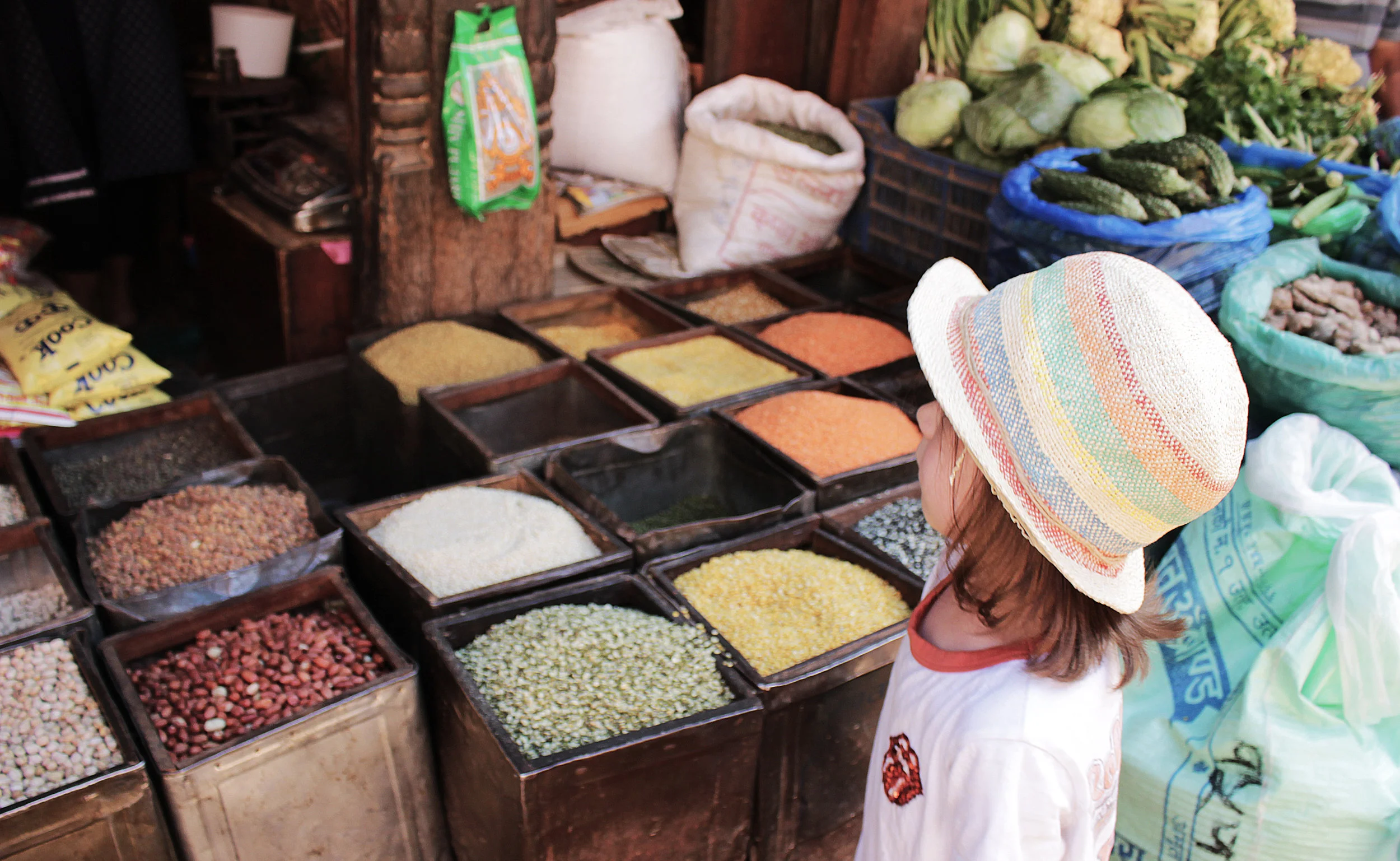Dashain
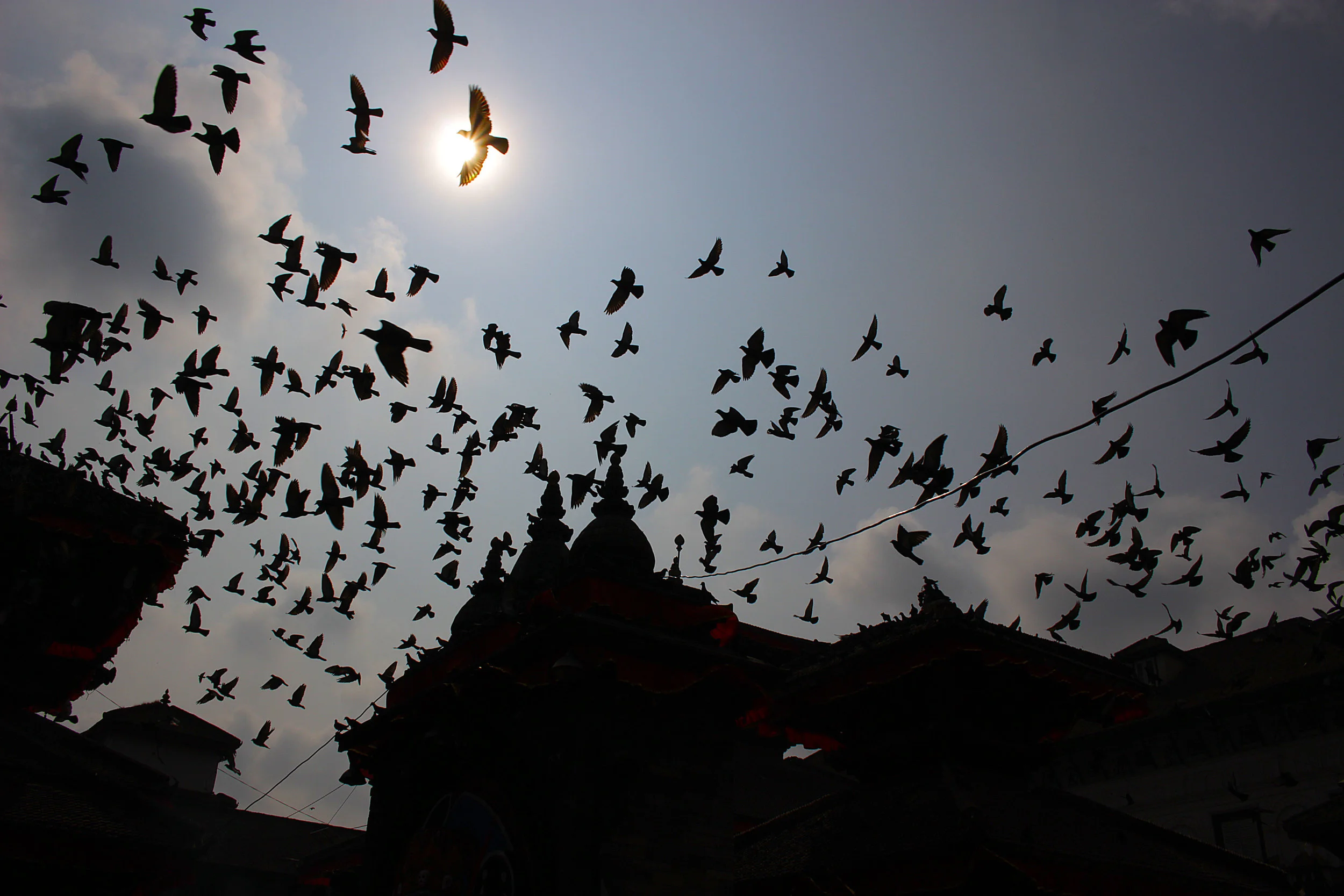
Bang. The deep baritone boom of the cannon tells us another one's bitten the dust, and sends a vast flock of pigeons flapping into the sky. The military drum starts up again and the soldiers in their sharp suits and brimmed hats march past, leading the sorry line of buffalo on their last grim walk. Durbar square is awash with saris in red and pink and gold, clashing garishly with the scarlet blood pooled at our feet. The sick line the road with cupped hands and bandaged stumps. The hawkers hawk hard, hot pink clouds of candy floss floating above their stalls. A little girl in her best satin party dress smiles from behind her dust mask. River yawns and flirts with someone over my shoulder.
We're in Kathmandu at the time of Dashain, the longest and most important Hindu festival in the Nepali calendar. They say that here, there are more festivals than normal days, so that's saying something. Don’t get us wrong, Dashain can be a pain. It lasts for fifteen days, which means that most things don't work. We had a parcel being delivered which missed us because the entire postal service was on pause for a fortnight. Laundrettes/museums/shops/pretty much everything you need are closed or slow “because of the holiday”. Having said all that, there is one massive benefit. The almost unbearable traffic is gone and you get to roam the capital in relative peace.
There’s a very good reason for this sudden tranquility: the days leading up to Dashain are a time of mass migration. The roads are blocked, the dust levels peak. Because the festival may be a celebration of good over evil, but it's also the time of year that everyone goes home. And, as we can't do that, we get lucky and go to someone else's home. Our friends Amar and Amresh welcomed us into their family with open arms, which was a huge honour. They let us see the real Dashain, introducing us to the very particular traditions and foods, sacrifices and swings that make up this monumental fortnight.
Far too many things happened in those two weeks to wrangle into one story, so we'll give you the highlights, the greatest hits. Here goes.
Let's start with the swings. Wherever we go, we always try to find a unapologetically kid thing to do, something totally dedicated to Olivia. And it just so happens that one of the most iconic images of Dashain is the spectacular bamboo swing, set up in every village and suburb for the duration of the festival. Great towering structures, they are democracy personified, a brilliantly enjoyable and mildly terrifying free flight for any passing child. When we spent our first Dashain dinner at the family home, we heard whoops and screams, then looked out of the window to see a swing. A minute later we were out there, waiting our turn in the long grass and watching the local boys egg each other on, daring their friends to go higher and higher. Olivia and Lorenzo jumped on, flying through the air with her little high pitched shriek and his attempt at a brave laugh.These swings have no regard for health and safety and maximum respect for fun. They're bloody brilliant.
Next up, the ceremony. Everything that happens at Dashain is steeped in a sense of tradition and ceremony, from the most intimate blessing from an elder to a full military display, full of pomp and formality. We were introduced to the beaten rice, an oddly satisfying but almost impossible to chew form of rice, first soaked, then roasted, flattened and dried. Amar, the boss, pottered in the kitchen with his rainbow pots of spices, bringing out delicious dhal and fried spiced potatoes and rather more challenging plates of goat face and lungs.
One day, we were taken to Bungamati, the village where Amar's brother lives. After a day of food and puja at the temple, we were invited to receive our first tika. As the eldest of the family, Amar held court. We joined our adoptive family in the living room, where we took it in turns to kneel in front of Amar. Red shreds of fabric were tied around our necks, money pressed into our palms, holy jamara grass tucked behind our ears and the distinctive thick red tika pigment pushed onto our foreheads. Hushed silence gave way to bursts of chatter and camera flashes after each blessing.
Down in the village that evening was the man believed to be possessed the spirit of the half-monkey, half-man god of war Hanuman. He ran shrieking down the narrow streets, preparing for his annual tradition of scaling a vertiginous pole in the main square. But back up in the house, we were part of a babbling, gambling, happy family, fuelled by plates of homemade food with cooling curd and vodka shots.
Finally, let’s go back to those buffalo in Kathmandu. "The Newari people don't really like the sacrifices anymore", Amresh told us at dinner the night before, "but you know, it's tradition, so it still goes on". On the night of the eighth day of Dashain known as Kal Ratri or ‘the black night’, the first cannon sounds, the beasts howl under the moon and the bloodshed begins. It marks the beheading of hundreds of buffalo, goats and chickens in Kathmandu's iconic and temple-strewn Durbar Square.
The killings continue into the next day, and we make it through an army cordon to a parallel square to see the real thing. Beyond the ropes, a goat is being petted, having petals dropped on his head and being politely applauded. It looks up innocently, apparently enjoying the attention. Sucker.
I see the moment the creature realises what’s going on, a little too late. The hair stands straight up in a panicked ridge along his spine and his strange devil-eyes startle. Human hands start to force him still. Then the khukuri knife comes down hard and the canon fires, and his head is dragged fast across the ground to join the line of his decapitated peers.
They repeat the process, again and again. First with a watermelon, which we can handle, then with a buffalo, which I can’t. The victims line up under gold fringed flags of amber and midnight blue. Olivia, who cheerfully sits at home watching gruesome operations on Channel 4’s ‘Supervet’, has a very clinical fascination with blood and a practical approach to death. She asks to watch the sacrifice, but it’s obviously too much. Even the poker-faced soldier leans over and whispers “Don’t let her see. It will harm her mental health.” I couldn’t agree more. So with every creature, as the moment edges closer, I make her turn to face me.
I try not to flinch as the shot rings out, but I fail. Olivia sees it in my face. I feel awful. That night it rains like it means it, great fat dollops of water lashing the roads and washing the blood away. A good old cry, letting it all out. Ready for the next day of celebration.
In a lot of ways, Dashain is a perfect reflection of our time in Nepal. It was chaotic and confrontational, beautiful and intimate, spectacular and sometimes entirely mad. There were times we felt out of our depth, times we felt it was all too much, but looking back, all we really think is "how privileged were we?"

